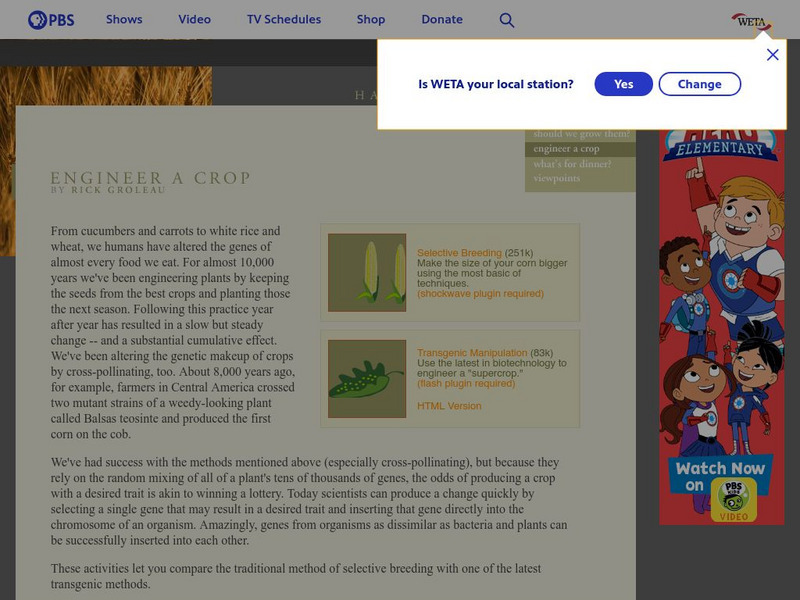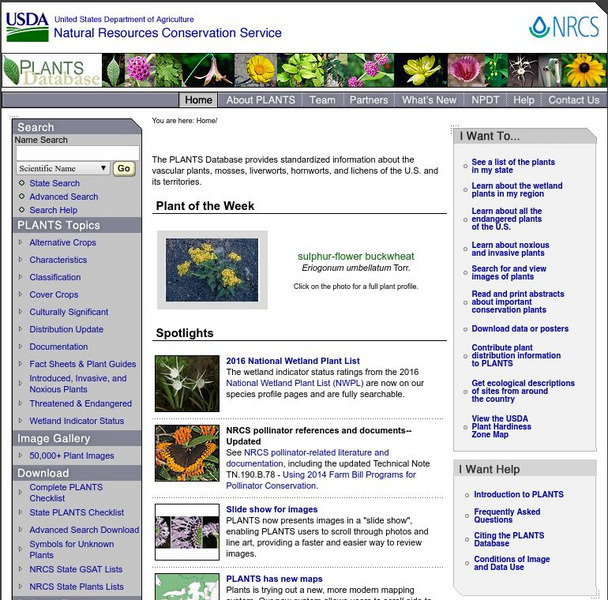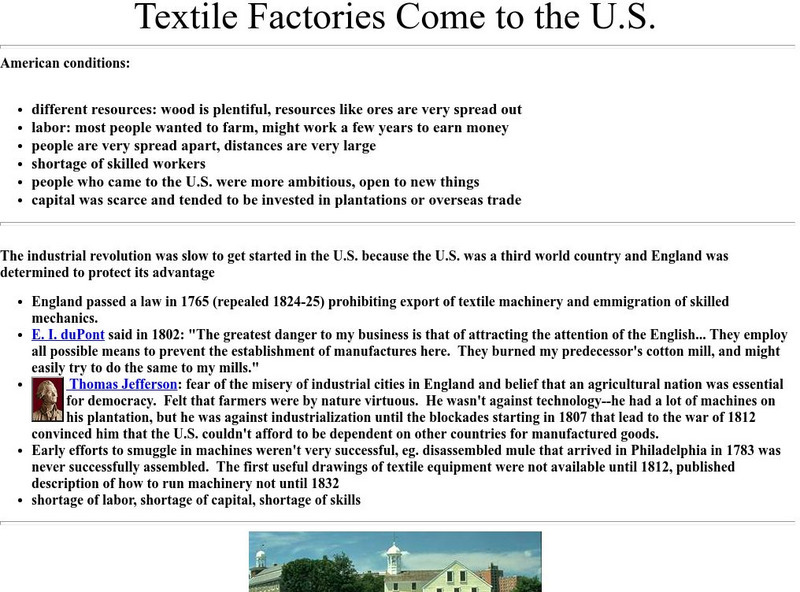Wessels Living History Farm
Living History Farm: Crop Rotation
A history of crop rotation in the United States. Once an incentive from the New Deal, farmers were paid to plant certain crops or let the soil lie fallow.
PBS
Pbs Teachers:engineer a Crop
Compare the traditional method of selective breeding with transgenic methods. Interactive activities on this site include breeding the largest ear of corn possible and engineering a "super crop".
PBS
Nova: Engineering a Crop
This interactive simulation allows you to compare selective breeding with transgenic manipulation to see which one produces a better crop.
US Department of Agriculture
Usda: Plants National Database
This resource provides a database of standardized information on plants. Click on Photo Gallery to view photographs of various categories of plants, including noxious plants and crops.
State Energy Conservation Office-Texas
State Energy Conservation Office:energy Sources: Biomass Energy From Agriculture
Texas has the potential for becoming a leading provider of biomass energy due to its agricultural industry. Some crops produced in Texas, such as canola, switchgrass, sorghum, and sugarcane, have been identified as energy crops that...
Other
The Progressive Farmer
Progressive Farmer delivers the latest news in the agriculture industry: Crop and livestock production, new technology and products, business and financial information, weather, markets and government regulations.
Other
Crop Life: The Importance of Agricultural Lime
Read here about why farmers use aglime on their crops. Proper use of aglime is one of the most important management inputs in successful crop production.
A&E Television
History.com: 7 Foods Developed by Native Americans
These seven dietary staples were cultivated over thousands of years by Indigenous peoples of America. While Indigenous diets and foodways were deeply impacted by European settlement, Indigenous American foods also changed the world....
PBS
Now With Bill Moyers: Genetically Modified Foods
Learn about genetically-engineered foods, then research and report how genetic engineering is done. Investigate the pros and cons related to genetically engineered crops, and express one's own feelings on the topic.
Famous Scientists
Famous Scientists: Trofim Lysenko
Meet the Ukranian scientist known for his experimental research in improved crop yields called vernalization. However, he rejected Mendelian genetics in favor of pseudoscientific ideas.
University of Groningen
American History: Essays: Anglo Amer. Colonization in Texas: Food Production
Describes the role Texas played in trading food crops in the mid-1800s.
Popular Science
Popular Science: Something Funny Down on the Pharm
This article investigates the growing industry of pharming, or genetically engineering and growing crops in order to produce pharmaceutical drugs. While there is huge potential for this industry, the article concentrates on the...
Practical Action
Practical Action: Floating Garden Challenge
In this unit, students will learn about the difficulty that farmers in Bangladesh and the UK experience trying to grow crops on land that is regularly flooded. Then they will be challenged to make a model of a structure that can float to...
US National Archives
Nara: Prologue Magazine: The Surprising George Washington
This lengthy article from the Prologue Magazine discusses the general state of food production in World War II. In particular the article focuses on thw Women's Land Army, women recruited from both farm and city to grow and harvest the...
OpenStax
Open Stax: The Collapse of Reconstruction
This section from a chapter on "The Era of Reconstruction" explains the reasons for the collapse of Reconstruction and describes the efforts of white southern "redeemers" to roll back the gains of Reconstruction.
PBS
Pbs Learning Media: George Washington Carver: Scientist, Inventor, and Teacher
By doing two primary source activities and watching a short video, students will explore the life of science and innovation led by George Washington Carver.
Georgia Humanities Council and the University of Georgia Press.
New Georgia Encyclopedia: Sharecropping
Features a detailed discussion of sharecropping, a labor system that developed in Georgia after the Civil War in which workers raised crops for someone else in exchange for a share of the crop.
American Association for the Advancement of Science
American Association for Advancement of Science: The Slow Birth of Agriculture
An article which describes the slow process of crop cultivation. The author argues that crop cultivation and village life may not have been connected.
Other
Lecture Notes: Textile Factories Come to the u.s.
Clemson University provides a historical overview of the wave of textile factories, including Slater and Lowell, that cropped up in the northeast. Hyperlinks to additional information.
University of California
The History Project: New Harmony an Experimental, Cooperative Community
The 1820s were a crucial period in our history. Much of the foundation of our modern industrial society was laid during this time. It was an era of optimism and prosperity, but also of social tensions and anxieties. The economy expanded...
A&E Television
History.com: How the South Helped Win the American Revolution
British commanders attempted to reverse their floundering fortunes by launching a campaign in the South. There the British would find not just crops such as tobacco, rice and indigo that were vital to their economy, but stronger Loyalist...
A&E Television
History.com: Why the Wampanoag Signed a Peace Treaty With the Mayflower Pilgrims
The peace accord, which would be honored on both sides for the next half-century, was the first official treaty between English settlers and Native Americans, and a rare example of cooperation between the two groups. On the orders of...
Society for Science and the Public
Science News for Students: World's Tallest Corn Towers Nearly 14 Meters
Short nights and a genetic tweak helped novel corn reach record heights in upstate New York. Check out the skyscraping stalks.
National Humanities Center
National Humanities Center: Teacher Serve: The Columbian Exchange
Explore the consequences of the discovery of the New World from a different lens. The Columbian Exchange is a term that identifies the earth-shaping swap of plants, animals, and organisms. This paper from the National Humanities Center...
Other popular searches
- Climate and Crops
- Cash Crops
- Crops Grown in Illinois
- Florida Crops
- Biotechnology Crops
- Crops North America
- Food Crops
- Cotton Crops
- Cereal Crops
- Farm Crops
- Lebanon Crops
- Farms + Crops













